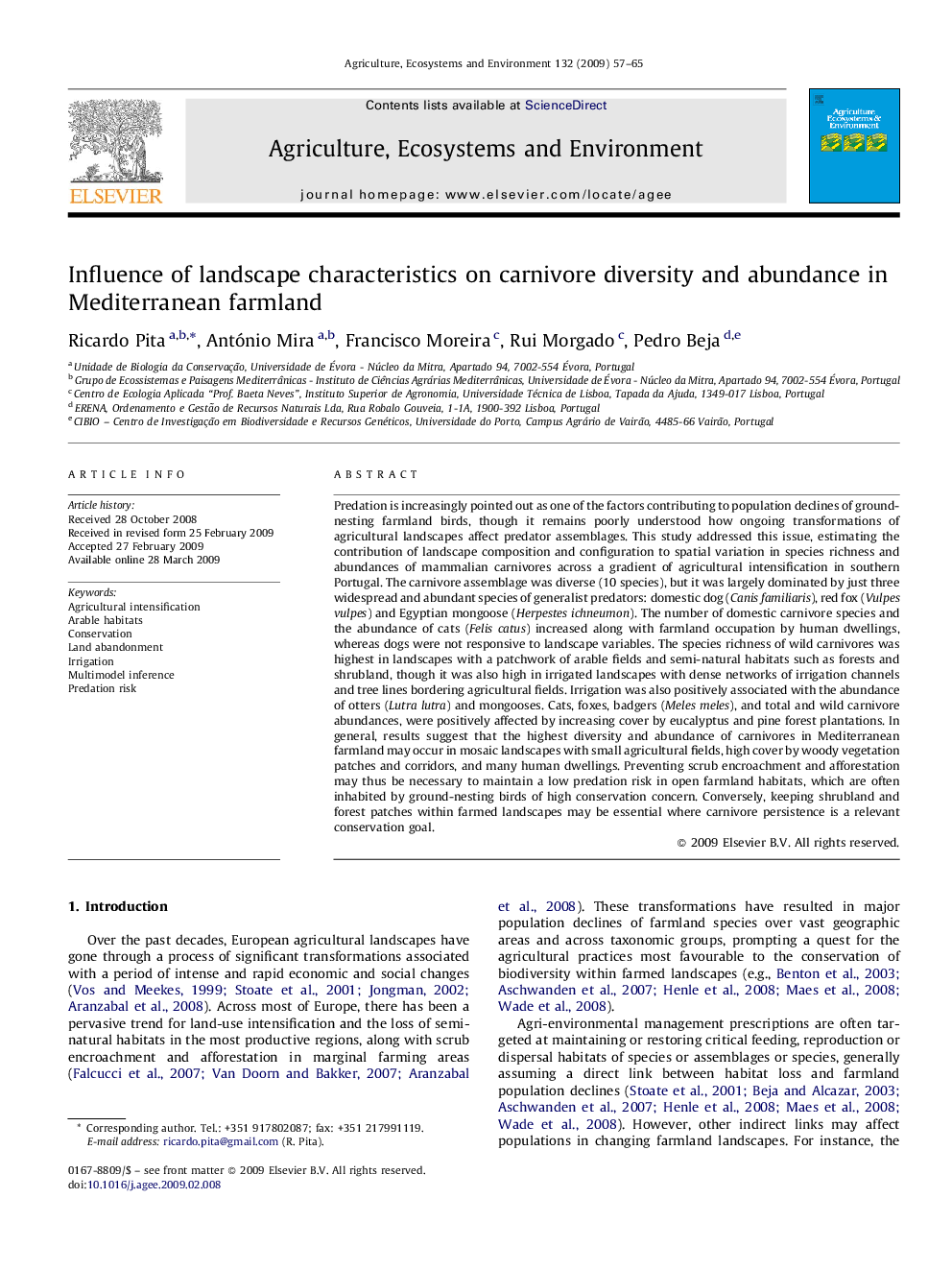| کد مقاله | کد نشریه | سال انتشار | مقاله انگلیسی | نسخه تمام متن |
|---|---|---|---|---|
| 2415142 | 1552125 | 2009 | 9 صفحه PDF | دانلود رایگان |

Predation is increasingly pointed out as one of the factors contributing to population declines of ground-nesting farmland birds, though it remains poorly understood how ongoing transformations of agricultural landscapes affect predator assemblages. This study addressed this issue, estimating the contribution of landscape composition and configuration to spatial variation in species richness and abundances of mammalian carnivores across a gradient of agricultural intensification in southern Portugal. The carnivore assemblage was diverse (10 species), but it was largely dominated by just three widespread and abundant species of generalist predators: domestic dog (Canis familiaris), red fox (Vulpes vulpes) and Egyptian mongoose (Herpestes ichneumon). The number of domestic carnivore species and the abundance of cats (Felis catus) increased along with farmland occupation by human dwellings, whereas dogs were not responsive to landscape variables. The species richness of wild carnivores was highest in landscapes with a patchwork of arable fields and semi-natural habitats such as forests and shrubland, though it was also high in irrigated landscapes with dense networks of irrigation channels and tree lines bordering agricultural fields. Irrigation was also positively associated with the abundance of otters (Lutra lutra) and mongooses. Cats, foxes, badgers (Meles meles), and total and wild carnivore abundances, were positively affected by increasing cover by eucalyptus and pine forest plantations. In general, results suggest that the highest diversity and abundance of carnivores in Mediterranean farmland may occur in mosaic landscapes with small agricultural fields, high cover by woody vegetation patches and corridors, and many human dwellings. Preventing scrub encroachment and afforestation may thus be necessary to maintain a low predation risk in open farmland habitats, which are often inhabited by ground-nesting birds of high conservation concern. Conversely, keeping shrubland and forest patches within farmed landscapes may be essential where carnivore persistence is a relevant conservation goal.
Journal: Agriculture, Ecosystems & Environment - Volume 132, Issues 1–2, July 2009, Pages 57–65